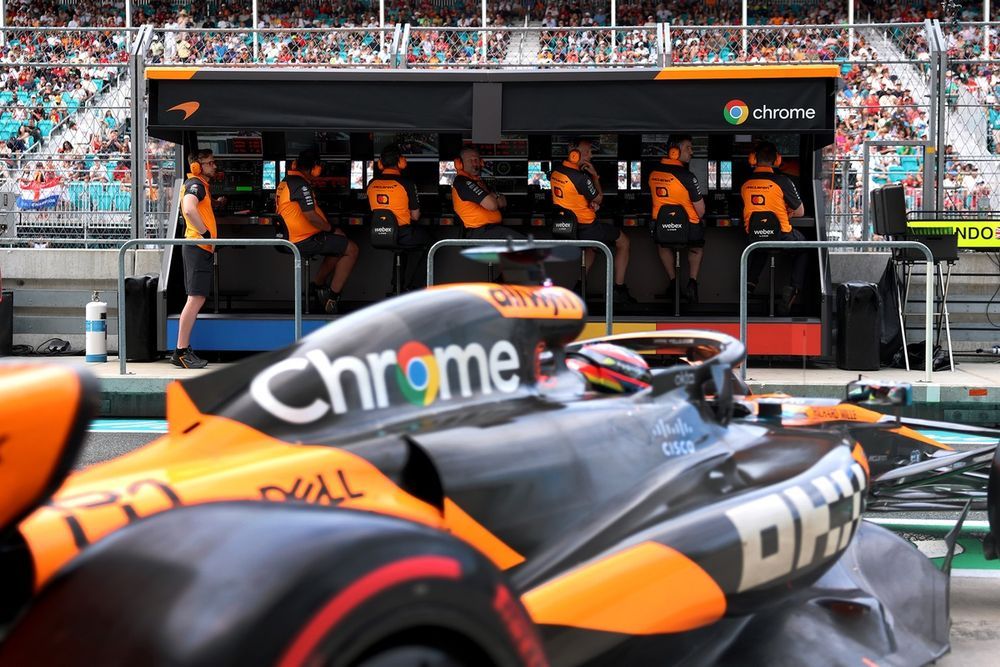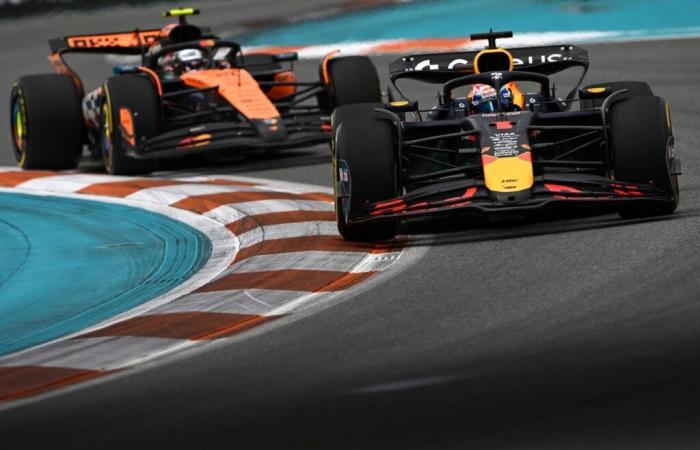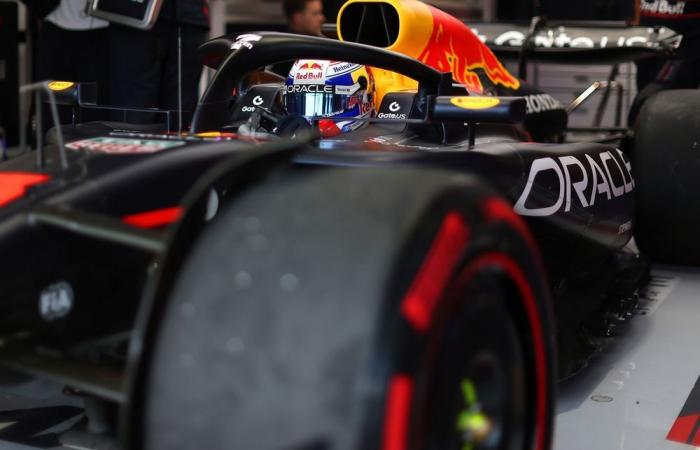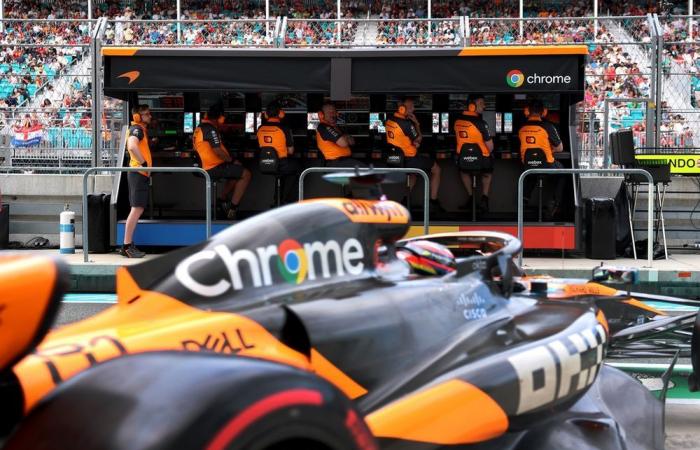After the first six race weekends of the 2025 season of Formula 1, the pattern is clear: Max Verstappen can compete with McLaren on a return and make a difference, but in most races his Red Bull prevents him from really presenting battle.
On the first point, the explanation is double. In the first place, Verstappen knows how to squeeze everything from its RB21 and can push that car a little more, since the wear of the tires is not so much that matters in a classification return. The Dutchman has already achieved pole three times: in Suzuka, Yeda and, more recently, in Miami.
The second part of the explanation, according to Andrea Stella, is in McLaren’s car. According to the head of the Woking team, The MCL39 is difficult to pilot a single round, with unpredictability in the front in particular. It is easy for the wheels to be blocked and according to Stella that explains why Oscar Piastri and especially Lando Norris do not get the most out of their car every time in the Q3.
“Now we have enough data to confirm that our car is easier in the race than in a classification lap with new tires. For now we have not done a perfect classification turn, although Oscar’s return in Bahrein was perhaps the one that approached the most,” said the Italian.
That these problems do not appear so much during the races is because everything is less to the limit. The car (just below the limit) is much more predictable And, above all, it exposes the strongest point of McLaren: harass the life of tires. Stella called him the “black art” of Formula 1 on Sunday night. “It is clear that during the races – when you give many laps in a row and face the wear of the tires in heat conditions – our car yields very well. I would like to emphasize that it is the result of a very specific engineering work in our team.”
Bahrain and Miami as a new reality test for Red Bull
Encs perfectly with the numbers. Verstappen has so far been the one who has been able to compete with the McLaren, especially in Japan and Saudi Arabia, and it is no accident. In fact, in Suzuka he was able to take advantage of his pole, since the overtaking were practically impossible, and the very quick Yeda circuit is very specific and the rapid curves adapt well to the RB21, in addition, the wear of the tires is traditionally very low and that aspect played in favor of Verstappen and Red Bull. Therefore, it is not quite fair that Christian Horner often cite this race to emphasize that the panorama can vary from one circuit to another, since Yeda was in a certain sense the atypical value And you can’t erase Red Bull’s structural problems.
These structural problems have been revealed in Bahrain and especially in Miami. Two races played with high temperatures in which the wear of the tires played an important or even decisive role. In both races, the Red Bull pilots tires quickly overheated, which caused wear greater than McLaren.
In Bahrain, for example, Verstappen came to shoot more than half a minute from the McLaren and managed to end up little ahead of Pierre Gasly. In Miami, although the final result was slightly better with a fourth place, the difference in the finish line with the winner [Piastri] It was almost 40 seconds.
Marko estimated the difference between seven tenths and a second by returnwhich are really light years in Formula 1. not in vain, described the “depressing” panorama for Red Bull. But he added that Red Bull updates – a new floor in Miami – are giving less results than they really expected in any case.
Focus on the brakes, interesting the recording of the heat chamber?
Same interesting is what Verstappen said in the paddock on Saturday: “If you see what McLaren is doing with the tires, we are all doing something wrong …”.
“You have also seen it with intermediates in rain. As soon as the tires overheat, they have a great advantage.” The key question, of course, is what McLaren is doing exactly and if that can be replicated by its rivals: “We are doing everything possible to solve this. But some things take longer, also understand everything well. Then produce it is another story,” he said in response to that question by Motorsport.com.

The first step, as Verstappen points out, is to understand exactly what McLaren is doing. Attention is currently focused on the brakes and, more specifically, on the brake drum.
As commented on the paddock, The work of Red Bull has included the study of the images of the heat camerasthat have shown interesting “bruises”, indicating that Certain parts of the McLaren brake drum are remarkably coldwhich helps prevent the heat of the brakes from passing to the tires and, therefore, prevents them from overheating.
The FIA made a review of the McLaren car after the Miami Grand Prix, which included that aspect. The selected car document always arrives just before the next weekend of racing, although, as reported, everything should be in order and, therefore, be legal. That makes the search for their rivals continue, although There are two factors that complicate things: Due to the limit of expenses and the fact that the team approach will have to pass sooner or later, there can be no infinite investment in this year’s car.
Beyond this season? Knowledge must be transferred to 2026
For Red Bull it is crucial that the team understands the problem, especially since the implications go beyond 2025. The head of the McLaren team, Stella recognizes that current knowledge is also partly transferable to 2026. By then, although cars will be completely different, the tires too and everything will be based on completely different regulations, Stella states that the foundations can be transferred.
“There are some fundamental things that you can spend next year, yes. The foundations of the understanding that can be used for next year’s car – especially aerodynamic things that affect tires – will be completely different next year. So we have to see how we can move current knowledge to 2026 and, of course, that will be another learning process.”
Horner also knows that this is a potential key to successNot only now, but also in the long term: “If we look at the data after the race, all cars suffered similar problems. Only McLaren can manage those things much better.”
That makes clear that McLaren’s current domain is not limited to flexible ailerons. Of course, Barcelona will be an interesting point, since there will harden the rules related to the front wings. But the appearance of the tires is perhaps even more worrying for Red Bull.
The current panorama confirms it once again: the Black art of which Stella speaks is undeniable in modern formula 1. After all, who has that in his favor can go very far.
In this article
Ronald Vording
Formula 1
Max Verstappen
Christian Horner
McLaren F1
Red Bull Racing
Be the first to find out and subscribe to receive updates by real news email on these issues.Subscribe to news alerts








